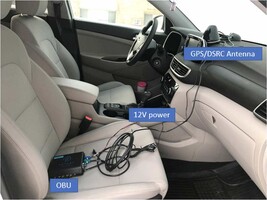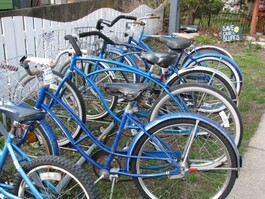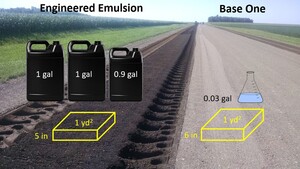|
Transportation Research Update


MnDOT’s Connected Corridor project developed and deployed technology to lay the groundwork for connected vehicles. With vehicle-to-infrastructure communication, cars can receive data about upcoming traffic signals, including when they are likely to change. If the connected vehicle has adaptive cruise control or other automated speed control, it can use the signal messages to adjust speed, avoiding unnecessary stopping and starting. This driving behavior can decrease fuel consumption.
After retrofitting cars with technology to communicate with the corridor infrastructure, researchers test-drove the cars through intersections to collect data on signals, speeds and traffic conditions. Combined with laboratory simulations and computer modeling, these efforts allowed researchers to estimate fuel savings when varying levels of connected vehicles were driving the corridors. Comparing these benefits to the costs of deploying the signal messaging technology in more intersections will help MnDOT make informed choices on future investments.
|

Transit systems in cities and suburban areas don’t always meet the transportation needs of rural communities. Dispersed populations and destinations make it difficult for public agencies to provide sufficient transit services, and private providers may not have the demand to justify their operation in rural areas. Many residents are forced to own vehicles that sit unused much of the time. An alternative shared mobility services approach may better meet rural transit needs while strengthening communities and local economies.
With the input of a broad spectrum of stakeholders, investigators identified the needs and issues with transit in Wabasha, Minnesota. Evaluating rural transit ideas from across the country and analyzing specific transit platforms and apps helped identify strategies that could be used in Wabasha and other rural communities. Leveraging mobile and internet technologies, underutilized private vehicles and school buses, and existing volunteer networks could improve transit services in rural areas.
|

A 4-3 conversion, also known as a “road diet,” reconfigures a four-lane undivided roadway into a three-lane road. Typically, one lane for each direction is separated by a bidirectional turning lane. The extra space gained may be used for a bike, bus or parking lane or a shoulder; to widen sidewalks; to add safety features such as curb extensions and medians; or to add green infrastructure. While this configuration can have safety benefits, losing two motor vehicle travel lanes could result in a more congested road or a decreased motor vehicle level of service during certain hours of the day. New guidance will help local transportation agencies predict when the impacts to level of service may be unacceptable, and balance this data point with others in decision-making.
This project focused on average daily traffic (ADT) for a road recommended for conversion to determine whether the conversion would adversely impact the motor vehicle capacity along the road. Running numerous computer simulations on a variety of road, intersection and traffic scenarios, researchers found that in addition to the ADT of the road before conversion, the capacity of the crossroads and controls at intersections may impact whether a conversion could result in a reduction in motor vehicle level of service. Guidance is available for local engineers to make initial assessments about the feasibility of a 4-3 conversion.
|

Local transportation agencies rely on stabilized full-depth reclamation (SFDR) as a pavement rehabilitation strategy. Beltrami and Hubbard counties planned separate rehabilitation projects on a road located in both counties. In the pavement process, they used different stabilizers to strengthen the road base under the asphalt. These projects presented a unique opportunity to compare two stabilizers: engineered emulsion in Beltrami County and Base One in Hubbard County.
Reviewing pavement designs, costs and performance, researchers determined that both products met the counties’ expectations for pavement strength. While the engineered emulsion was significantly more expensive per mile, it did perform better after one year, resulting in less cracking from low temperatures. The engineered emulsion requires an extra step of designing the specific mix for the road and different equipment for its application. County engineers will monitor the asphalt conditions over the next several years. Both products give counties options to choose from based on the average road traffic and resources available.
|
|
|
|
MnDOT invites and encourages participation by all people in their programs, services and activities.
If you need an ASL, a foreign language interpreter, or documents in an alternative format (such as braille, large print or in a different language) at no cost, please email your request to Janet Miller at ADArequest.dot@state.mn.us or call 651-366-4720. Relay service: 711.
If you need any other reasonable accommodation to participate (such as seating modification or auxiliary aids), please email your request to Accessibility.DOT@state.mn.us or call 1-833-400-8432. Relay service: 711.
|
|
|
|